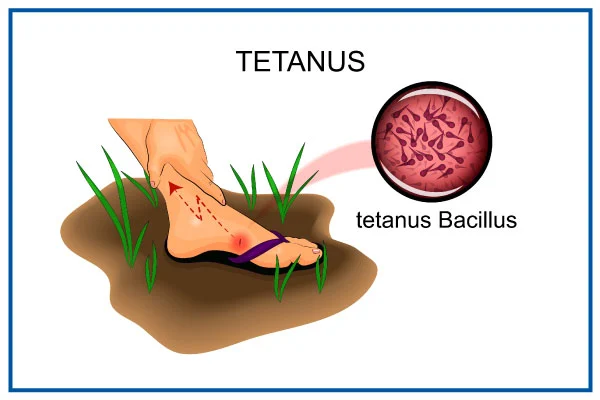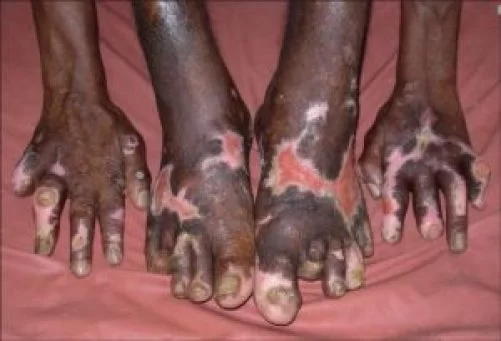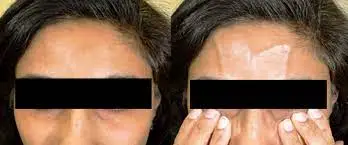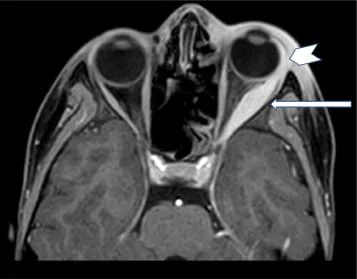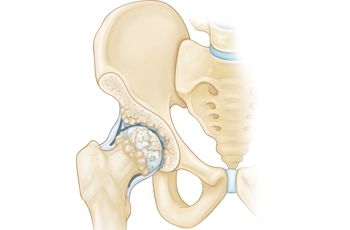Tetanus
What is Tetanus?
Tetanus is a periodically fatal condition of the central nervous system. It’s induced by a poison (toxin) produced by the tetanus bacterium. The bacterium generally enters the body via an open wound. Tetanus bacteria live in soil and manure. They can also be seen in the human intestine and different areas.
Tetanus happens more frequently in warmer weather or during the warmer months.
Tetanus is very unusual in the U.S. due to overall immunization.
Tetanus can show in one of four clinical ways:
- Generalized
- Local
- Cephalic
- Neonatal
Causes of Tetanus
Tetanus is generated by the Clostridium tetani bacterium.
Clostridium tetani spores can stay for a long time outside of the body. They are most generally seen in animal manure and poisonous soil but may exist nearly anywhere.
When Clostridium tetani penetrate the body, they reproduce rapidly and discharge tetanospasmin, a neurotoxin. When tetanospasmin penetrates the bloodstream, it rapidly circulates almost the body, generating tetanus symptoms.
Tetanospasmin interrupts the signals crossing from the brain to the nerves in the spinal cord, and then on to the muscles, generating muscle spasms and immobility.
Clostridium tetani enter the body, especially via skin cuts or puncture wounds. Simply cleaning any cut assists to control an infection from forming.
Common forms of contracting tetanus contain:
- wounds that have been infected with saliva or feces
- burns
- crush injuries
- wounds that contain dead tissue
- puncture wound
Rare forms of contracting tetanus contain:
- surgical methods
- superficial wounds
- insect bites
- compound fractures
- intravenous drug use
- injections into the muscle
- dental infections
Risk factors
The most significant risk factor for tetanus infection is not existing vaccinated or not maintaining up with the 10-year booster shots.
Other factors that raise the risk of tetanus infection are:
Cuts or wounds disclosed to soil or manure
A foreign body in a wound, like a nail or a splinter
A record of immune-suppressing medical diseases
Infected skin lesions in someone living with diabetes
An infected umbilical cord when a mother isn’t completely vaccinated
Shared and unsanitary syringes for illegal medication use
What are the symptoms of tetanus?
These are the most familiar symptoms of tetanus:
- Stiff jaw (also known as lockjaw)
- Stiff abdominal and back muscles
- Contraction of the facial muscles
- Fast pulse
- Fever
- Sweating
- Problem swallowing
Painful muscle spasms, particularly near the wound site (if these involve the throat or chest wall, breathing may be blocked)
The symptoms of tetanus may look such as other medical diseases. Always see your healthcare provider or doctor for a diagnosis.
Differential Diagnosis
The only situation that simulates tetanus the most is strychnine poisoning. One of the specific symptoms of tetanus is trismus which may be present in many further diseases. Those states are noted below:
- Localized infections
- Hysteria
- Neoplasms
- Malignant hyperthermia
- Stimulant medications
- Acute abdomen
- Dystonic medication effects
- Serotonin syndrome
- Black widow spider envenomation
- Stiff person syndrome
How is Tetanus diagnosed?
Your doctor or physician will conduct a physical examination to inspect for symptoms of tetanus, like muscle immobility and aching spasms.
Unlike many further conditions, tetanus is not typically analyzed via laboratory tests. Yet, your doctor or physician may still conduct lab tests to assist rule out conditions with equal symptoms. These contain meningitis, a bacterial infection that impacts the brain and spinal cord, or rabies, a viral infection that generates brain swelling.
Your doctor or physician will also establish a tetanus diagnosis on your immunization record. You’re at a more increased risk of tetanus if you haven’t been vaccinated or if you’re overdue for a booster shot.
Treatment of Tetanus
The therapy of tetanus is established on the severity of the condition. Nevertheless, all persons must have the subsequent purposes of treatment:
- Early wound debridement
- Supportive management
- Antibiotic therapy
- Early intramuscular or intravenous management of the human tetanus immunoglobulin (HTIG)
- Neuromuscular blockade
- Controlling different representations
- Managing difficulties
Treatment relies on the severity of your symptoms. Tetanus is generally treated with a combination of therapies and drugs, like:
antibiotics like penicillin to destroy the bacteria in your system
tetanus immune globulin (TIG) to neutralize the toxins that the bacteria have formed in your body
muscle relaxers to prevent muscle spasms
a tetanus vaccine is given along with the therapy
cleaning the wound to bring rid of the origin of the bacteria
Physiotherapy treatment
Nowadays, research is specified on the Physical therapy management of people with tetanus. Cardiopulmonary physical treatment can be used to assist in the prevention of respiratory difficulties. Physical therapy can even be used to assist with muscle rigidity and cramps.
Physiotherapy’s purpose at preventing, or if required, managing the difficulties of the condition
Common Difficulties
- Pneumonia and atelectasis.
- Joint immobility and dropped feet.
- Venous thrombosis. (This is not as familiar, but has been reported in a modest percentage of patients.)
The Chest
Two-hourly postural drainage is taken out and is attended by passive breathing to get the maximum expansion of the lungs. The air in the chamber is maintained moist by the constant use of moisture kettles. Oxygen is being pumped into the lungs by the respirator and the raised air input generated by the synthetic respiration makes over oxygenation. To avoid this, the oxygen collection may be cut off during therapy so that the respirator is even working, but is pumping in ordinary air. The tension of the hands on the chest must, of course, be timed to work in with the beat of the respirator.
Although strong percussion is needed, maintenance must be brought not to create a severe spasm which may verify fatally.
It is best to do the therapy to correspond with the administration of the medications so that there is the highest sedation at the time of therapy. If the patient displays signs of irritability (one of the first is frowning) it is more useful to postpone the therapy until he is calm. When percussing the chest, a stimulus can be underrated by putting one hand flat on the person’s ribs and functioning a hacking motion on it with the further.
Suction
Suction should attend to the postural drainage as there is no cough reflex to remove the secretions when they get the bronchi. Also, it is important to recognize the vital significance of decreasing stimulation to the definitive minimum as over-stimulation might so efficiently prove fatal.
A soft polythene pipe is utilized in choosing the regular rubber as it accommodates more readily to the angles of the throat and bronchi. Suction should be used via the tracheotomy line, the mouth, and the nose. The respirator has to be disjoined to suction via the line so this must be done as fast as feasible. The device should not be turned off, but only separated from the line so that there is no wait in continuing the mechanism.
The suction line is kept closed while being inserted and is only removed for suction while being retreated. While removing it, it is comfortable to feel when it is passing via some mucous and it may then be transferred gently backward and forwards over this place to remove as much secretion as feasible.
The Limbs
The arms
Passive motions of the arms are exactly as for any paralyzed person and should be accomplished whenever the chest is managed.
The legs
As described earlier, a stimulus of the soles of the feet generates an extensor thrust which creates dorsiflexion too hard. This problem is even more pronounced when the curare has only been paused and there is yet a tendency to spasm. The few days following this seem to be the most important if fallen feet are to be controlled.
The spasm may, to a particular extent, be overwhelmed by using force to the sole very slowly, as it appears to accommodate it. In extreme tetanus, the spasm of the calves if the foot is pushed up unexpectedly, is so amazing that it is almost impossible to overwhelm even in a small kid. Plaster of Paris slings does not seem to be of great value as the spasm twists them out of form within a few hours.
Thrombophlebitis
After the complete range of passive motions, it is advisable to bring out rapid motions with a pumping motion getting maximum stretch and ease of the calves. Massage with the legs in elevation also assists to control this difficulty.
Surgery
If the doctor or surgeons believes the tetanus-prone wound is very big, they may surgically extract as greatly of the broken and infected muscle as feasible (debridement).
Debridement is the action of withdrawing dead or harmful tissue, or unfamiliar material. In the issue of tetanus induce wounds, the foreign substrate may be dirt or manure.
Nutrition
A person with tetanus needs an increased daily calorie input because of improved muscle activity.
Ventilator
Some persons may require a ventilator asset to help with breathing if their vocal cords or respiratory muscles are involved.
Dos
- Get tetanus injection
- Avoid walking barefoot
- Clean the wound correctly with an antiseptic solution or clean water.
- Switch the bandage dressing daily.
Donts
- Forget to tell the doctor or physician about previous severe wounds.
- Self-treat wounds
- Save rusted devices in your house
- Avoid carrying tetanus toxoid vaccines.
Complications in Tetanus
Complications of tetanus infection may contain:
Breathing problems. Life-threatening breathing issues can happen from tensing of the vocal cords and muscle rigidity in the neck and abdomen, particularly during a generalized spasm.
Blockage of a lung artery (pulmonary embolism). A blood clump that has crossed from elsewhere in your body can clog the major artery of the lung or one of its components.
Pneumonia. A lung infection induced by accidentally inhaling something into the lungs (aspiration pneumonia) may be a difficulty of generalized spasms.
Broken bones. Generalized spasms may induce fractures of the spine or further bones.
Death. Death from tetanus is frequently generated by a clogged airway during spasms or injury to the nerves that control breathing, heart rate, or further organ functions.
Laryngospasm: The voice box moves into a spasm which can stay up to a minute and generate breathing problems. In extreme circumstances, the person can suffocate.
Tetanic seizures: If infection circulates to the brain, the patient with tetanus can feel fits.
Pulmonary embolism: A blood vessel in the lung can evolve clogged and impact breathing and circulation. The person will urgently require oxygen treatment and an anti-clotting drug.
Severe kidney failure (acute renal failure): Extreme muscle spasms can destroy skeletal muscle which can generate a muscle protein to spread into the urine. This can generate extreme kidney failure.
How to Prevent Tetanus?
You can control tetanus by being immunized.
Vaccination for children
The tetanus vaccine is provided to kids as a portion of diphtheria and tetanus toxoids and acellular pertussis vaccine (DTaP). Diphtheria is a severe bacterial illness of the nose and throat. Acellular pertussis, also known as whooping cough, is a favorably contagious respiratory illness.
Kids who do not handle the pertussis vaccine may obtain the alternative vaccine known as DT.
The DTaP is a sequel of five shots generally provided in the arm or thigh to kids at ages:
- 2 months
- 4 months
- 6 months
- 15 to 18 months
- 4 to 6 years
Vaccination for children ages 7 to 18
A booster shot is suggested for kids at age 11 or 12. This booster is also known as the Tdap vaccine. If your kid didn’t obtain a booster shot at this age, speak to your doctor or physician regarding suitable choices.
Vaccination for adults age 19 and older
A booster shot is suggested for grown-ups once every 10 years. This may be one of two vaccines (Tdap or Td). If you weren’t immunized against tetanus as a kid or are uncertain regarding your vaccination situation, see your doctor or physician regarding obtaining the Tdap vaccine.
Vaccination during pregnancy
A booster is advised during the third trimester of a pregnancy, however of the mother’s vaccination program.
Other recommendations
Ask your doctor or physician to check your vaccination situation regularly.
Inspect whether you are present in your vaccination program if you are preparing for international travel.
Use antibiotics. After you wash the wound, spread a light layer of an antibiotic lotion or ointment. These antibiotics won’t create the wound heal quickly, but they can prevent bacterial development and infection.
Cover the wound. Disclosure to the air might quicken healing, but bandages can maintain the wound clean and maintain dangerous bacteria out. Blisters that are exhausting are vulnerable. Maintain them hidden until a scab form.
Change the dressing. Use a new dressing at least once a day or whenever the dressing evolves wet or dirty to assist control infection.
Control the bleeding. Use direct tension to prevent bleeding.
Keep the wound clean. After the bleeding endings, irrigate the wound entirely with clean running water. Clean the region near the wound with soap and a washcloth. If something is implanted in a wound, visit your doctor or physician.
FAQ
How do u know if u have tetanus?
Signs and symptoms of generalized tetanus contain Aching muscle spasms and rigid, unmovable muscles (muscle rigidity) in your jaw. The tension of muscles near your lips occasionally delivers a persistent grin. Aching cramps and rigidity in your neck muscles.
Can tetanus be cured?
There’s no treatment for tetanus. A tetanus infection needs emergency and long-term substantiating maintenance while the condition runs its course. Therapy consists of wound maintenance, drugs to soothe symptoms, and supportive maintenance, generally in an intensive care unit.
When should I worry about tetanus?
You may require a tetanus vaccine if the injury has hurt your skin and your tetanus vaccinations are not up to date. Tetanus is a severe but rare disease that can be fatal if untreated. The bacteria that can generate tetanus can penetrate your body via a wound or cut in your skin. They’re frequently seen in soil and manure.
How immediate is tetanus?
The symptoms of tetanus generally produce 4 to 21 days after infection. On moderate, they begin after about 10 days. The major symptoms contain immobility in your jaw muscles (lockjaw), which can cause opening your mouth hard.
How urgent is tetanus?
You must do so shortly after being damaged. Tetanus infection can penetrate the body via scrapes, small cuts, and scratches. If you’re cut by a metallic or rusty thing or suffer a deep wound, directly confer with a doctor or physician regarding obtaining a tetanus shot.

